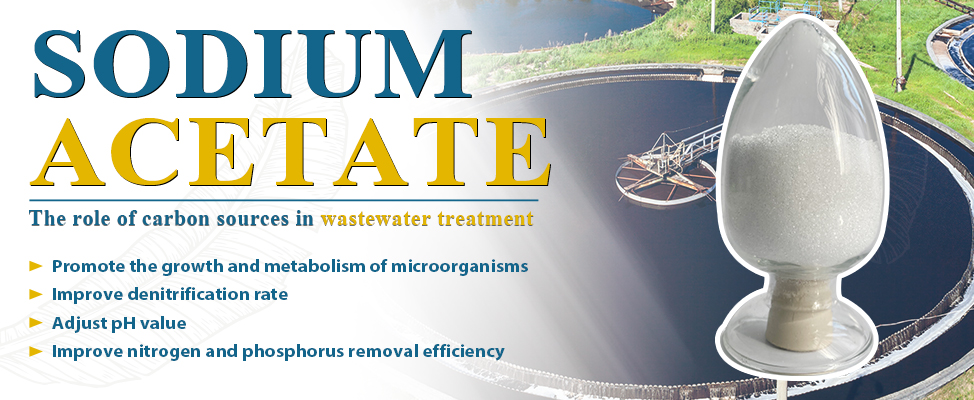
Nitrogen removal is a key step in wastewater treatment. Since many influents have low carbon-to-nitrogen (C/N) ratios, external carbon sources are required to achieve effective denitrification. Sodium acetate has become widely used because of its high biodegradability, fast reaction rate, and safety advantages.
1. Accelerates Denitrification by providing easily biodegradable carbon.
2. Reduces Effluent TN, meeting stricter discharge limits.
3. Improves Process Stability in fluctuating influents.
4. Safer Alternative compared to methanol.
Municipal Wastewater
√ Carbon deficiency is common.
√ Sodium acetate helps maintain TN < 10–15 mg/L in treated effluent.
Textile & Dyeing Wastewater
√ Low C/N ratio and high colority.
√ Sodium acetate supplementation boosts nitrogen removal and biological efficiency.
Pulp & Paper Wastewater
√ High COD but low biodegradable carbon.
√ Sodium acetate improves microbial activity and TN removal.
Chemical Industry Wastewater
√ Toxic components often inhibit microbial growth.
√ Sodium acetate provides a quick, safe carbon source to stabilize denitrification.
Food & Beverage Wastewater
√ Influent COD fluctuates.
√ Sodium acetate balances C/N and ensures stable treatment.
Aquaculture / High-Ammonium Wastewater
√ High ammonium concentrations with carbon deficiency.
√ Sodium acetate enhances denitrification and reduces TN effectively.
Dosing Points
√ At the inlet of denitrification tanks for maximum nitrate contact.
√ Multi-point dosing for influents with fluctuations.
Dosing Rates
√ Typically calculated with C/N = 4–6.
√ Adjusted dynamically based on influent nitrogen concentration.
Precautions
√ Avoid overdosing to prevent COD increase.
√ Automated dosing systems improve stability and safety.
| Carbon Source | Advantages | Disadvantages | Applications |
|---|---|---|---|
| Sodium Acetate | Safe, fast, biodegradable | More expensive than methanol | Municipal & industrial wastewater |
| Methanol | Low cost, widely available | Safety risks, slower biodegradation | Large municipal plants |
| Glucose | Biodegradable, easy to use | Expensive, increases COD | Small plants, lab use |
Q1: Why is sodium acetate preferred over methanol?
A1: It is safer, faster, and suitable for small and medium plants.
Q2: What is the typical dosing rate for municipal wastewater?
A2: Based on C/N ratio 4–6, adjusted per influent conditions.
Q3: Is sodium acetate suitable for high-ammonium wastewater?
A3: Yes, it accelerates denitrification and lowers nitrogen levels quickly.
Q4: What dosing methods are recommended?
A4: Direct liquid dosing or automated dosing systems.
Q5: Can sodium acetate be combined with other carbon sources?
A5: Yes, it can be combined with glucose or acetic acid to balance cost and efficiency.
Application principle of sodium acetate in biological denitrification

Please contact us for free quotation by form below. We promise the quickest response within 24 hours: